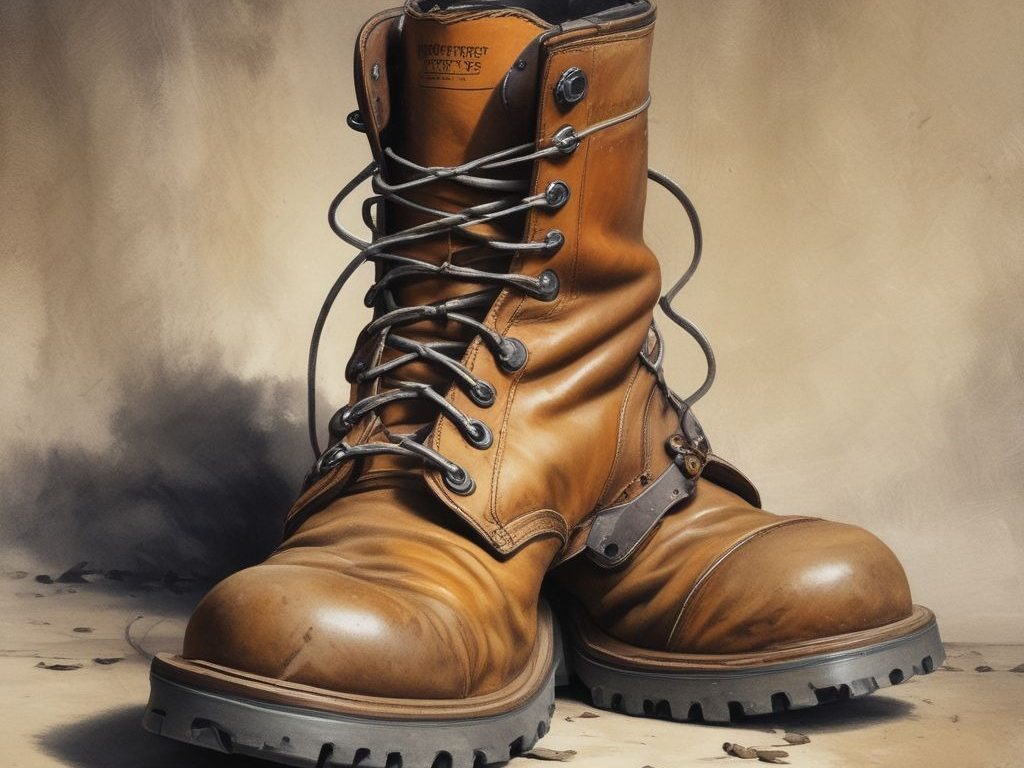Work boots are essential for people who work in tough environments. They protect the feet from injuries and provide comfort throughout the day. A good pair of work boots should have safety features that reduce the risk of accidents. Choosing the right work boots can make a big difference in preventing injuries. This article will discuss the most important safety features that every work boot should have.
The Top Safety Features Every Work Boot Should Have
1. Steel Toe Protection
One of the most important safety features is steel toe protection. This feature helps protect the toes from heavy objects that might fall or roll onto the foot. Workers in construction, warehouses, and factories often face the risk of dropped tools or materials. Steel toe boots provide a strong barrier that absorbs impact and prevents serious injuries. Some work boots also come with composite toe caps, which are lighter but still offer protection.
2. Slip-Resistant Soles
Slipping and falling are common workplace accidents. To prevent these accidents, work boots should have slip-resistant soles. These soles are designed with special treads that provide a strong grip on various surfaces. Workers who work on wet, oily, or uneven surfaces benefit the most from slip-resistant footwear. Proper traction reduces the risk of falls and helps workers stay safe while moving around.
3. Electrical Hazard Protection
Electrical hazard protection is a crucial feature for those working around electrical equipment. Some work boots are designed to reduce the risk of electric shocks by preventing electricity from passing through the boot. These boots have special insulation materials that make them safe for electricians and other workers who handle electrical components. Choosing a boot with electrical hazard protection can prevent serious injuries or even fatalities.
4. Puncture-Resistant Midsoles
Sharp objects on the ground can be dangerous. Work boots with puncture-resistant midsoles protect the feet from nails, glass, or metal debris. These midsoles are usually made from steel or other strong materials that prevent sharp objects from penetrating the sole. Construction workers, factory workers, and those who work in hazardous environments benefit greatly from this feature. Puncture-resistant boots reduce the risk of foot injuries and allow workers to focus on their tasks.
5. Waterproof Material
Working in wet conditions can be uncomfortable and dangerous. Wet feet can lead to blisters, infections, and cold-related illnesses. Waterproof work boots help keep the feet dry in rainy, muddy, or damp environments. Many waterproof boots are made with special membranes that prevent water from entering while allowing moisture to escape. This keeps the feet dry and comfortable throughout the workday.
6. Ankle Support and Stability
Good ankle support is essential for preventing sprains and injuries. Some jobs require workers to walk on uneven ground or carry heavy loads. Without proper ankle support, there is a higher risk of twisting or injuring the ankle. High-cut work boots provide additional stability and prevent excessive ankle movement. Workers who need to climb ladders or navigate rough terrain should look for boots that offer strong ankle support.
7. Heat and Cold Resistance
Extreme temperatures can affect the performance of work boots. In high-temperature environments, boots should be heat-resistant to prevent burns and discomfort. Some work boots are made with fire-resistant materials for added safety. In cold environments, insulated boots help keep the feet warm and prevent frostbite. Workers in outdoor settings, such as construction sites or warehouses, should choose boots that are suitable for their specific working conditions.
8. Breathability and Comfort
Comfort is just as important as safety. A good pair of work boots should be breathable to prevent excessive sweating. Breathable materials allow air to circulate inside the boot, keeping the feet cool and dry. Moisture-wicking liners help remove sweat and reduce the risk of blisters or infections. Workers who wear boots for long hours need a comfortable fit to prevent foot fatigue.
9. Lightweight Design
Heavy work boots can cause strain and fatigue, especially after long hours of use. A lightweight design helps reduce stress on the feet and legs. Some work boots use composite materials instead of steel to provide protection while keeping the boots light. Workers who need to move quickly or stand for extended periods benefit from lightweight boots that do not compromise safety.
10. Oil and Chemical Resistance
Some workplaces expose workers to oils, chemicals, and other hazardous substances. Work boots with oil and chemical-resistant soles prevent damage and provide better traction. These boots are made from materials that resist deterioration from chemicals and protect the feet from harmful spills. Workers in laboratories, factories, and industrial settings should look for boots with this feature.
Conclusion
Safety should always be a priority when choosing work boots. Features like steel toe protection, slip-resistant soles, and puncture-resistant midsoles help prevent serious injuries. Electrical hazard protection, waterproof materials, and ankle support add extra safety and comfort. Choosing the right pair of work boots ensures that workers can perform their tasks with confidence and protection. Investing in high-quality work boots is a smart decision for anyone working in demanding environments.


